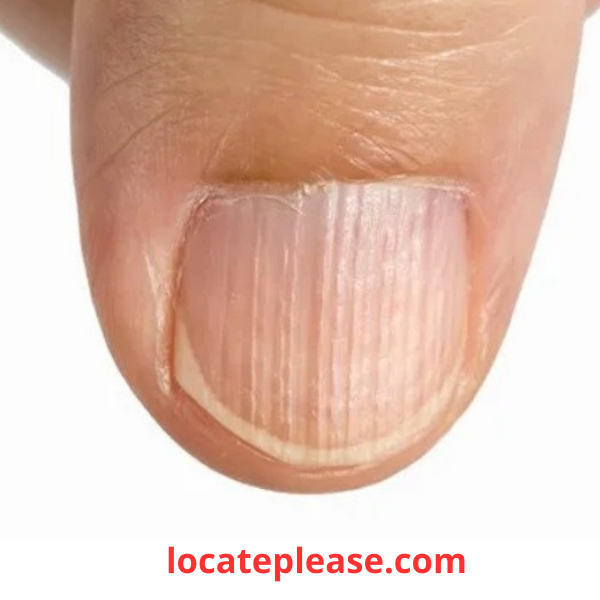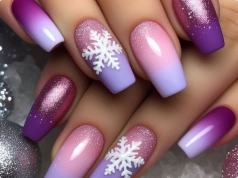Fingernails often serve as a window into your overall health, and paying attention to their appearance can provide valuable insights. One common concern people notice is the presence of ridges—vertical or horizontal lines that appear on the nail surface. While some ridges are harmless and simply a result of aging, others may signal underlying health issues. To help you better understand what these ridges might mean, we consulted with Dr. Emily Carter, a board-certified dermatologist and expert in nail health.
What Are Nail Ridges?
Nail ridges are raised lines or grooves that run either vertically (from cuticle to tip) or horizontally (side to side) across the nail plate. According to Dr. Carter, “Ridges can occur due to a variety of reasons, ranging from natural aging processes to nutritional deficiencies or systemic health conditions.”
Understanding whether your ridges are vertical or horizontal is key to determining their cause and significance. Here’s what each type might indicate:
1. Vertical Ridges
Vertical ridges are the most common type and typically run lengthwise along the nail. These are often benign and become more prominent as we age.
- Causes:
- Natural Aging Process: Just like wrinkles on the skin, vertical ridges can develop as part of the natural wear and tear on nails over time.
- Dehydration: Dry nails may show subtle ridges, which can improve with proper hydration and moisturization.
- Mild Nutritional Deficiencies: A lack of essential vitamins such as B-complex vitamins, iron, or zinc can contribute to weaker nails prone to ridging.
- When to Worry:
Dr. Carter notes, “If vertical ridges appear suddenly and are accompanied by other symptoms like brittle nails, discoloration, or pain, it could indicate an underlying issue such as thyroid disease, anemia, or malnutrition.”
2. Horizontal Ridges (Beau’s Lines)
Horizontal ridges, also known as Beau’s lines, are deeper grooves that span across the width of the nail. Unlike vertical ridges, these are almost always a sign of an underlying problem.
- Causes:
- Severe Illness or Injury: Beau’s lines often form when the body undergoes significant stress, such as a high fever, surgery, or severe infection.
- Nutrient Deficiencies: Low levels of protein, iron, or other critical nutrients can disrupt nail growth.
- Autoimmune Disorders: Conditions like psoriasis, eczema, or lupus can affect nail health and lead to horizontal ridges.
- Chemotherapy: Cancer treatments can temporarily halt nail growth, resulting in noticeable ridges.
- When to Seek Help:
“Horizontal ridges should not be ignored,” warns Dr. Carter. “They usually reflect a period of interrupted nail growth and can point to serious health concerns. If you notice multiple ridges or they persist without explanation, consult a healthcare provider for further evaluation.”
Other Possible Signs of Nail Health Issues
In addition to ridges, certain accompanying changes in the nails may offer additional clues about your health:
- Discoloration: Yellow nails may suggest fungal infections, while pale nails could indicate anemia or liver problems.
- Thickening or Brittleness: Often linked to fungal infections, psoriasis, or hypothyroidism.
- Pitting or Dents: Common in individuals with autoimmune diseases like psoriasis or alopecia areata.
- White Spots: Typically harmless and caused by minor trauma, but persistent spots could signal a zinc deficiency.
How to Care for Your Nails
Regardless of the cause of your nail ridges, maintaining good nail care can help improve their appearance and overall health. Dr. Carter recommends the following tips:
- Stay Hydrated: Drink plenty of water daily and apply a nourishing cuticle oil or hand cream to keep nails hydrated.
- Eat a Balanced Diet: Focus on foods rich in biotin (eggs, nuts), iron (spinach, red meat), and omega-3 fatty acids (fish, flaxseeds).
- Avoid Harsh Chemicals: Limit exposure to acetone-based nail polish removers, which can dry out and damage nails.
- Protect Your Hands: Wear gloves when washing dishes or doing chores to shield your nails from harsh detergents.
- Regular Check-Ups: Visit a dermatologist or primary care physician if you notice persistent changes in your nails, especially those affecting multiple fingers or toes.
When Should You See a Doctor?
While occasional ridges may be harmless, Dr. Carter emphasizes seeking medical advice if you experience any of the following:
- Sudden development of deep ridges or other unusual nail changes.
- Pain, swelling, or redness around the nails.
- Accompanying symptoms like fatigue, hair loss, or unexplained weight changes.
- Persistent ridges that worsen over time or fail to resolve.
“Your nails are an extension of your skin and connective tissues,” says Dr. Carter. “Changes in their structure or appearance shouldn’t be dismissed, as they can sometimes reveal early signs of systemic diseases.”
Having ridges on your fingernails doesn’t necessarily mean something is wrong—but it’s worth paying attention to. By understanding the potential causes and taking proactive steps to care for your nails, you can maintain both their appearance and your overall well-being. If in doubt, don’t hesitate to reach out to a healthcare professional who can guide you through proper diagnosis and treatment.
Remember, healthy nails are a reflection of a healthy body. Keep yours strong and vibrant by staying informed and prioritizing self-care!










